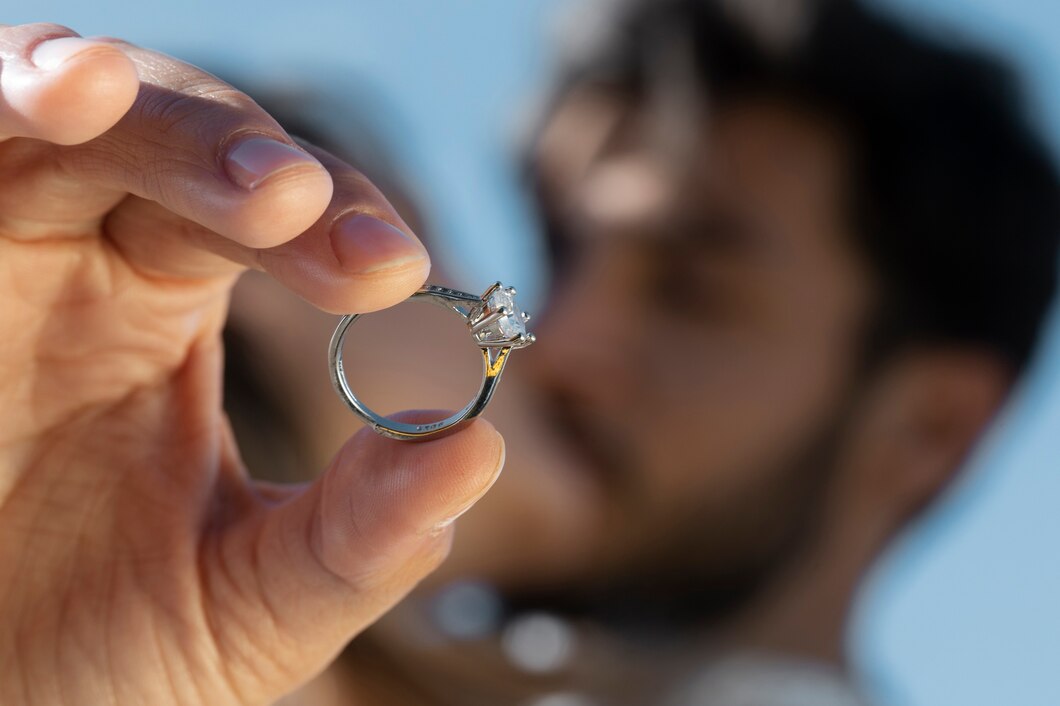
How to Check the Authenticity of a Diamond Ring at Home?
A diamond ring is an expensive item of jewelry with high emotional and financial worth. It is important to verify the authenticity of a diamond ring before buying it or inheriting one. Although expert gemological testing is the most trustworthy procedure, there are various methods you can use at home to determine the authenticity of a diamond ring.
We would like to share with you six ways to determine a diamond ring’s genuineness without using specialized tools.
Visual Examination
1) Start by carefully studying the diamond ring in optimal lighting.
2) Search for any defects or abnormalities –
Genuine diamonds frequently have tiny internal flaws called inclusions that signify their natural nature. Yet, these flaws might not be present in man-made or imitation diamonds.
3) Look at the color and brightness of the diamond –
Real diamonds shine with mesmerizing brilliance and reflect light exceptionally effectively. If the stone seems too flawless or dull, be wary because knockoffs frequently have similar qualities.
The Fog Test
1) Create a layer of moisture on the diamond’s surface by taking a gentle breath –
Since genuine diamonds swiftly disperse heat, the fog should vanish almost immediately.
2) If you see fog –
It can be a sign of a false diamond if the fog lasts for a few seconds.
Note –
Because of its limitations, this test is best applied in conjunction with other techniques.
The Newspaper Test
1) Put the diamond ring on a sheet with tiny printing, face down.
2) Look through the table facet to see the diamond –
The diamond can be a fake if the writing can be read clearly or if you can make out distorted lettering. Real diamonds diffract light so that the text is either impossible to read or highly distorted.
Note –
Nevertheless, it should be noted that this test is not always reliable, especially for smaller diamonds since their facets might not interact with the text as noticeably.
Test for Thermal Conductivity
Diamonds are exceptional conductors of heat.
1) Touch your lips or cheek with a real diamond and a fake one, like cubic zirconia, for a split second.
2) Next, run your fingertip along the stones.
The fake stone will retain heat and feel warmer to the touch, but the diamond will feel cold to the touch due to its excellent conductivity.
Note –
This test relies on the differences in thermal conductivity and is a simple yet effective way to differentiate between genuine and fake diamonds.
UV Lighting Test
1) Put the diamond ring in the UV (ultraviolet) light.
Under UV light, real diamonds frequently glow in blue color. Even so, not all diamonds glow; therefore, the absence of fluorescence does not always signify a fake.
2) Some diamond substitutes, such as cubic zirconia, on the other hand, may radiate a different color or none at all.
Note –
This test should not be relied upon exclusively, but rather as an additional technique.
Request expert confirmation
The tests outlined above can offer helpful insights, but they are not perfect. It is strongly advised that you speak with a qualified gemologist if you have any questions about the authenticity of your diamond ring.
Gemologists have the knowledge and sophisticated equipment needed to evaluate the authenticity and quality of diamonds with accuracy. They are capable of performing thorough examinations like sophisticated microscopic analysis, spectroscopy, and diamond grading.
With these methods, you will be able to check the authenticity of your diamond ring at home without any hassle. Use these methods and be sure about the genuineness of your diamond jewelry.
